I've never really been a bird person, but my yard has been taken over by them and I can't help but be mesmorized by them! So I've been doing a little research--eating breakfast with my i.d. book in hand and looking up bird calls on
Bird Jam and
Bird Web. It's amazing to begin to put the animals to the sounds that were always there and unknown! I haven't had any luck photographing any birds, so the pics here are not mine.
 |
| Brian Small and Robert Royse photo |
|
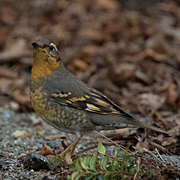 |
| Joseph V. Higbee photo |
Of course, there's the robin. Who doesn't welcome the pronounced orange chest of a robin hopping around looking for worms? The varied thrushes and robins love to hang out at the edge of our driveway hunting for worms in the leaf litter of our giant cottonwood tree. Sometimes they chase each other off.
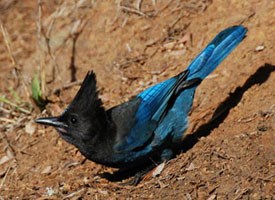 |
| quasimodo4502 photo |
|
|
|
|
I love Steller's jays. I love that sqawk any time of the day! They are great at telling me that there's a hawk in the yard so I can lock up the chickens. Last year I went out to see what their commotion was about one afternoon and saw a raven fly off with a baby jay, mother jay in hot pursuit. It was wild!
 |
| Greg Lavaty photo |
|
There's a beautiful yellow bird I've seen sporadically since we've lived here. I think it's a wilson's warbler. It darts around in the blueberry bushes.
 |
| Tom Grey photo |
I first started noticing the juncos last year when they took a liking to the barn. Whenever I opened the door they would dart out the vents near the eaves. The white V of their tails in flight made them an easy first bird to identify. This spring they've been feeding daily on the lawn. (which is actually sparse grass and lots of plantain). This evening one of them stood guard, perched on a low branch, watching the other feed. As my dog walked across the lawn the feeding one flew up to perch on a fence, then landed inside and continued eating. The guard junco immediately changed the direction of it's perch to keep watching the feeding junco. It made for interesting observation and conversation as Huck and I ate dinner by the window.
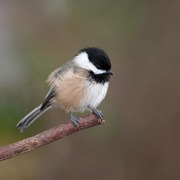 |
| Lee Barnes photo |
|
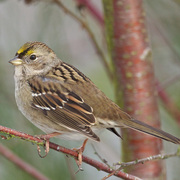 |
| Gregg Thompson photo |
I
know there are chickadees around because I hear them. I'm not sure
which kind of chickadee they are, but maybe if I'd see one
sometime......
This morning I noticed some new birds--I think they're savannah sparrows.They're nondescriptly mottled brown, but they have this great yellow stripe down their head. They and the juncos fed
together and didn't mind each other one bit.
The humming birds are always humming, squeeking, and darting. They love the blueberry flowers and the feeders.We also hear the Canada geese, who are down on the wetlands. I often mistake their cackles for Huck calling me.
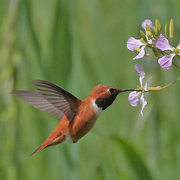  |
| Glen Tepke photo, Dennis Paulson photo |
|
 |
| Gregg Thompson photo |
And my FAVORITE, the red-breasted sapsucker. I love the variety of sounds it makes, especially the crazy loon-ish call. Last year I saw one
almost daily in the garden. This year, as Huck was mountain biking on a new trail we had made, we heard strange flicking and mumbling sounds.
We looked up expecting to see a squirrel, but it was the sapsucker! We watched it for a long time that night as we whispered about how lucky we were to see the bird and to have it in our yard. Each time we see it we pause to observe as Huck falls into a quiet excitement--I wish I could carry one around with me for all those wild times! This evening we saw two running around trees doing that spring chase. We decided that tomorrow we should go searching for nest cavities.
It's really amazing to listen and watch the birds in our yard. I don't foresee myself becoming a bird connoisseur, but I certainly am excited to learn about this new facet of my yard's ecosystem. I guess the more I think about it, Huck really seems to have strong connections to birds. He's been terrified of owls his whole life though nothing else seems to scare him....He will come running across the yard, "Mom! I saw a cool bird over there!"......He rides his bike through the juncos to watch them fly....... In the fall we watched a video on the wildlife of Bhutan. In it were cranes that returned each year to a monastery. They would circle it three times then land and dance wildly and gracefully. A couple of weeks ago we were biking over the huge new bridge at Fish Creek trail and he threw down his bike, turned in circles and started dancing. I didn't make the connection at all, but then during his completely joyful dance he managed to beam out: "Mom! I'm like the cranes in Bhutan!" He was certainly happy to have arrived to the end of the bridge!
 |
| Ripping it up on the wetlands -almost 4 years old. |



 I've been working on making small rock beds on the ends of the wooden
raised beds. They're for perennials and really make the garden look like
a nice place to hang out instead of just a vegetable factory! I never
would have thought a few shrubs and flowers could make such a
difference. I even got my parents to dig up and send a couple of wild
hazel nut trees to me. We'll see how they do! On the sunny day we had a
few days ago Huck grabbed his camp chair and said, "Mom, let's go enjoy
the garden," to which he hauled his chair up the hill, into the center
of the garden, and sat. We're really enjoying the native plants--from
the delicate current flowers to the marsh marrigold flowers, from the
frilly ferns to the wonderful skunk cabbage musk. While all the
vegetables in the garden are off and growing, it's left me with time to do a
bunch of native landscaping. It's been fun, and I'm on my way to my
long-term goal of representing all of Juneau's plants in my yard.
I've been working on making small rock beds on the ends of the wooden
raised beds. They're for perennials and really make the garden look like
a nice place to hang out instead of just a vegetable factory! I never
would have thought a few shrubs and flowers could make such a
difference. I even got my parents to dig up and send a couple of wild
hazel nut trees to me. We'll see how they do! On the sunny day we had a
few days ago Huck grabbed his camp chair and said, "Mom, let's go enjoy
the garden," to which he hauled his chair up the hill, into the center
of the garden, and sat. We're really enjoying the native plants--from
the delicate current flowers to the marsh marrigold flowers, from the
frilly ferns to the wonderful skunk cabbage musk. While all the
vegetables in the garden are off and growing, it's left me with time to do a
bunch of native landscaping. It's been fun, and I'm on my way to my
long-term goal of representing all of Juneau's plants in my yard. 
























